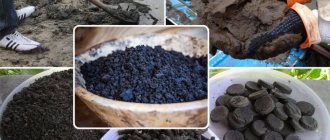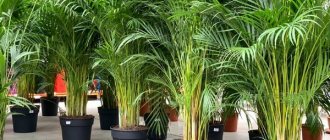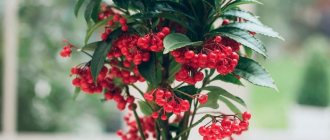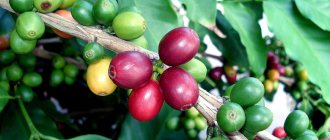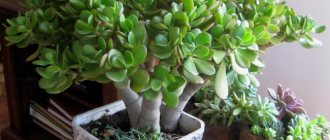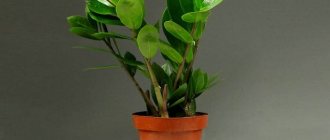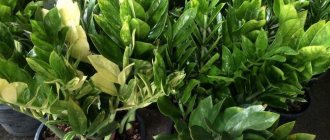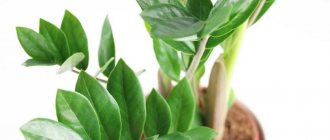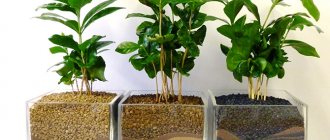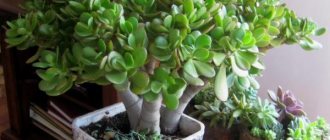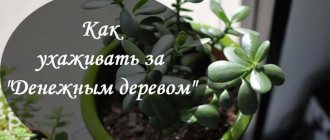Dates, beloved by many, grow on palm trees. Is it possible to grow it at home? Can! This exotic tree looks original and will become a real interior decoration. The date palm will be green and pleasing to the eye all year round. Some species will give luxurious blooms. Let's figure out what type of palm tree to choose for your home, how to grow and care for it.
Types of date palms
The origin of the date palm is uncertain today. It was mentioned by the ancient Phoenicians, Greeks, Jews, and Hindus. She was well known in Egypt and the Middle East. Daughters were named after palm trees in different languages. It was believed that this would bring beauty to the baby, many children and good luck in life.
When this plant appeared on earth is also a mystery. Scientists have proven that people became acquainted with this palm tree and its delicious fruits back in the Neolithic era. It has become the main source of nutrition for millions of people. Today there are 17 species of palm trees native to Africa and Eurasia. For growing at home, we recommend 3 suitable species.
Recurved date palm (phoenix reclinata)
This tree has several trunks with a diameter of 10-17 cm and looks like a bush. It reaches a height of 8 meters. At home it is much lower. The leaves have a spreading shape and look like the feathers of a fairytale bird. They are covered with needle-like growths - thorns. Date tree phoenix reclinata or crooked date palm blooms beautifully in nature. Inflorescences appear in the axils of the leaves. The palm tree is planted in greenhouses and large premises, as it grows well at home, but requires a lot of space.
Robelen date palm (phoenix roebelenii o brien)
Robelena is the smallest option, ideal for a room. The palm reaches a height of 2 meters. May have one or more trunks. Densely located on the rachis are narrow, soft, dark green leaves 12-20 cm long. A date of this type will definitely fall in love with your room if it is warm and relatively humid (at least 50%).
Forest date palm (phoenix sylvestris)
A plant with a wide single trunk in nature reaches 12 meters in height. The leaves have an original bluish-smoky color and a carved shape, consisting of several groups of elongated lobes. About 200 of them can grow on a palm tree. This makes its crown thick and voluminous. The flowers of the forest palm are white and directed upward. Loves dry climates and is unpretentious to abundant daylight.
Dates in the natural environment
The natural distribution area of the date palm is the deserts of Asia and North Africa. The deep root system of these plants is capable of extracting water from great depths. In its natural environment, the palm tree has a height of up to 20 m and can bear fruit for about 100 years.
The date palm is also called the phoenix. Its name is consonant with the name of the legendary mythological bird, which was able to burn itself and then be reborn from the ashes.
Palm plantings today are an important means of combating desertification
The date palm is a sacred tree for peoples inhabiting desert areas. Its fruits are called the bread of the desert, as they are the most important food product for the local population. Dates have an oblong shape with a hard seed inside. Since ancient times, they were dried and taken with them on long journeys by Egyptian and Phoenician merchants. Dried dates contain a huge supply of nutrients; they can not spoil and retain their taste even in the most intense heat.
Article on the topic: How to properly make drainage, from what materials
It is believed that a person can live for several years eating only dates and water.
Growing from seed
A homemade date palm grown from a seed will turn out no worse than a ready-made sprout bought in a store. The main thing is to properly prepare the seed for planting and plant it in suitable soil. The most favorable time for planting is the end of winter.
Selecting a seed to plant
Regular unprocessed dates bought at the market are suitable for planting. Choose ripe, unspoiled fruits. Eat the fruit and take a good look at the pit. If it is uniformly colored and does not have foulbrood, plaque, stains, or unevenness, set it aside for planting.
Prepare a few seeds for planting, because not all of them can germinate.
Seed preparation
- Rinse the selected seeds under running water.
- Pour warm water into a bowl.
- Place the date pits in a bowl to cover with water.
- Change the water every day, pour clean, warm water.
- After 3-4 days, remove the seeds and lightly file away the hard skin.
- Place them in warm water again for 3-4 days.
- Change the water 1-2 times a day until the sprouts of the future palm tree appear.
Soil selection
Suitable soil can be easily purchased at any flower shop. You can also cook it yourself. To plant a date seed, prepare a mixture of sawdust, turf and sand in equal proportions. To transplant a grown plant you will need: turf, leaf soil, humus, sand. Take all components in proportions accordingly - 1:1:1:5. To ensure that the soil for the date palm is initially fertilized, you can supplement the prepared soil with peat, coal, and rotted manure.
Landing rules
- Take a small pot 12-15 cm in diameter for planting. It’s not worth taking a large one right away; it’s better to replant it later.
- The prepared soil is placed on the drainage. For drainage under the date palm, pour 3 layers: pebbles, expanded clay, coarse sand.
- Make a 2-3 cm depression in the soil and place the sprouted seed there vertically, with the sprout facing upward.
- Sprinkle with soil and water generously.
- Cover the hole with a jar or place the pot on the radiator.
How to germinate a date seed
The date palm is grown from the seed. There is no need to look for seeds - you can buy dates at any fruit and vegetable store. There is no point in planting date palm seeds right away. They just won't come up. And if they germinate, it will be after a very long time.
What needs to be done to germinate dates:
- buy dates and select pits from them;
- inspect them: there should be no damage, mold, insects;
- Soak in clean water for a day so that the pulp comes off easily. The water needs to be changed several times, as the pulp inhibits seed germination;
- rinse the seeds;
- “awaken” the seed for two days in a thermos, into which pour warm melt water and add a few grains of humate;
- place in a container with damp, loose material: hydrogel, crushed sphagnum moss. Everything should be in a plastic bag;
- put in a warm place. The temperature should be about 35;
- germinate for 2-3 months, controlling humidity and removing condensation from the film.
Growing conditions
In order for the date to grow even, spreading, with natural colors, you need to follow the rules and provide it with comfortable conditions. The first shoots will appear in 1-3 months. When the plant reaches 10 cm in height, pick using the transshipment method.
Lighting
The plant loves the sun, so it will do better in a room with windows facing south or southeast. In summer, take the palm tree to the balcony or loggia. However, keep away from direct sunlight. The balcony must be glazed. Rotate the pot with the plant periodically, otherwise the leaves will grow unevenly and the crown will form crookedly. In the shade, the leaves grow longer as they reach towards the light.
Temperature
The date palm comes from the tropics, subtropics, and equatorial part of the planet, so it loves warmth. She is comfortable in mid-latitudes in summer. In winter, room temperature is sufficient. In the greenhouse in winter you need to maintain a temperature of +10 - +18 degrees. The room should not be hotter than 22 degrees. The room temperature for a date palm may be slightly higher in summer.
Until the sprout appears in the pot, provide an air temperature of +30 degrees, moisten the soil as it dries.
How to care for a plant
If you managed to get sprouts, it will not be difficult to grow palm trees from them. They grow well at home if you follow simple rules for caring for them. But this will take several years.
Dissected leaves of a palm tree appear only in the 4th-5th year of life.
Where to place
You need to think about whether you will be able to grow a beautiful and healthy plant even before planting it. Because for normal development, the date palm needs a certain temperature and light regime.
- The air temperature in winter should not fall below 17 degrees;
- In summer, dates feel great at temperatures up to 30 degrees;
- They need a place well lit by sunlight, but prolonged exposure to direct rays is undesirable, especially for young plants.
A young palm tree can be placed on a bright, southern windowsill, and in winter, make sure that the roots in the pot do not overcool. It is best to place it on a wooden stand and protect it from the cold air from the glass.
Light and warmth are essential conditions for the normal development of date palms
Once every few days, the pot needs to be turned on its other side towards the light so that the plant grows equally in all directions, without stretching out in one direction. Over time, there will be little space on the windowsill, and the palm tree will have to be rearranged. She needs a lot of free space and a lot of light.
How to replant
If the seeds were germinated in a common container, the seedlings are planted when they reach a height of about 15 cm. This must be done very carefully, without damaging the fragile roots.
It's time to plant these seedlings
Until the age of five, young palm trees are replanted every year, choosing a pot 5-7 cm in diameter larger than the previous one. Adult plants require replanting less often - once every 2-3 years. This should only be done when roots begin to emerge from the drainage holes.
Plants are clearly cramped in such containers
Transplantation is carried out exclusively by transshipment - horses cannot be exposed. The soil mixture for adult plants should be nutritious.
Experienced flower growers recommend the following composition:
- 50% humus;
- 50% mixture of equal parts of sand, peat, leaf and turf soil.
Transfer
Instead of expanded clay, you can put broken shards and pieces of charcoal at the bottom as drainage.
How to care
The date palm grows actively in the spring and summer; in winter it rests. Therefore, the main care occurs in the warm season.
- In summer, the palm tree needs to be watered frequently, not allowing the soil to dry out, but also not flooding it.
During active growth, the soil should always be moist
- For irrigation, use settled water at room temperature.
- During the dormant period, the frequency and intensity of watering is reduced.
- The plant easily tolerates low air humidity, but responds gratefully to spraying and wiping the leaves with a damp sponge.
- You can feed the palm tree only during the period of activity, using special fertilizers for palm trees and exotics or complex mineral fertilizers.
Fertilizer for palm trees
But the plant may also lack some specific microelements, then it is necessary to increase their dosage.
You can find out what exactly your palm tree is missing by looking at the following symptoms:
- Potassium deficiency - bronze-brown spots that appear first on old leaves and then on young ones. If measures are not taken, the leaves begin to curl, dry out and gradually die.
- Nitrogen deficiency - the leaves turn pale, becoming pale green, the palm tree stops growing.
- Manganese deficiency - brown spots on young leaves, stunted growth compared to other leaves.
The palm tree gives signals about a lack of microelements
For reference. A manganese deficiency can occur due to high acidity of irrigation water and too low air temperatures in winter.
- Magnesium deficiency - first on old and then on young leaves, a wide yellow stripe forms along the edge, the middle remains green.
How to deal with diseases and pests
The date palm has common pests with other indoor plants. These are spider mites, scale insects and mealybugs. And the methods of dealing with them are the same - insecticides, infusion of tobacco or garlic, a solution of laundry soap.
And it’s worth telling more about diseases and treatment methods.
The tips of the leaves dry out
| Symptoms of the disease | Causes and treatments |
| Slow growth, appearance of brown spots on leaves. | This is chlorosis, which occurs when watering with too hard water or when overwatering. We limit it and use softened water - melt, rain, boiled. |
| The leaves have completely turned brown. | The reason is rotting of the roots due to excessive watering. The plant can be saved only if there are living roots. Free the roots from the soil, cut off all rotten and damaged ones, treat the wounds with charcoal powder and replant the plant in fresh soil. But even in this case, success is not guaranteed. |
| The lower leaves darken. | It's okay - these are old leaves that have outlived their useful life. They need to be cut off. |
| The tips of the leaves become brown and dry. | Lack of watering, too dry or cold air. We increase watering and apply spraying. You can give the palm tree a warm shower. |
| Leaves turn yellow or droop. | The plant requires feeding or increased watering. It will not be possible to return the leaves to their previous position; they will have to be tied to supports. |
| The leaves lose color and turn pale. | The reason is prolonged exposure to direct sunlight. We protect the plant by moving it away from the window or covering the glass with tracing paper. |
Rules of care
Properly caring for a date palm is no more difficult than caring for an ordinary indoor flower. It needs to be watered, given a shower, fed and replanted as it grows. The date does not tolerate drafts, keep this in mind when placing it.
Watering
Palm trees love water. It does not tolerate dried soil. However, it is also not recommended to fill it, otherwise the roots will begin to rot. It is better to water less often, but abundantly as the soil dries. If the leaves droop down and spots appear on them, it means there is insufficient watering.
Spray dates regularly; they love moisture. Once a week, arrange more serious water treatments. If possible, place the plant's pot in a bathtub, cover the soil with plastic, and rinse the trunk and leaves from the shower.
Never use cold or hot water for watering, washing or spraying.
Top dressing
The date palm needs to be fed all year round. In winter, this should be done no more than once a month, and from March to September inclusive - once a week. Buy a ready-made universal mixture for palm and ornamental leaf plants. Mineral and organic fertilizers are suitable. Dilute them in water and apply to wet soil. Fertilizer should be applied a week after replanting, then the date palm will take root better.
Signs of battery shortage
- The leaves become lighter – there is not enough nitrogen in the soil. First, the leaves acquire a lighter shade, then the growth of the plant stops.
- The leaves are covered with bronze-brown spots - there is little potassium. At first the foliage will become covered with spots, then curl and dry out.
- Yellow edging on the leaves is a lack of magnesium. Feed with magnesium fertilizer, otherwise the plant will die over time.
Trimming
It is not recommended to prune the plant before 5 years of age - it may die. The top of the palm tree should also not be cut off, otherwise the growth point will be disrupted. Do not cut off damaged or yellowed foliage; let it dry out and fall off naturally.
Air humidity
Comfortable indoor air humidity for a date palm is not lower than 50 and not higher than 70%. Before the start of the heating season, move the pot away from the radiator. When the heating is turned on, cover the radiators with a wet cloth. In summer, during dry weather, spray the leaves more often with water at room temperature. This should be done at least once a week.
Watering and humidity
Water moderately. We avoid both overdrying and overwatering. But the crop tolerates a lack of moisture more easily due to its long roots.
We remember!
If the plant has suffered a long drying out of the earthen coma, it may not recover.
In summer we maintain humidity using a spray bottle and showering. While bathing, we also wash off the dust from the leaves. First cover the soil with film. Dust from palm fan leaves should be regularly wiped off with a damp sponge.
Water with warm, settled or filtered water 3 or 4 times a week in the summer. We drain the water from the pan so as not to harm the roots.
Does the date palm bear fruit at home?
Looking at pictures of palm trees in nature, we admire the huge clusters of fruits ripening on them. There are so many of them that the branches of a 10-20 meter palm tree bend down to the ground. Of course, we want to see at least a small part of this wealth on our pet. But no. Despite the fact that it is a date tree, the palm tree is unlikely to produce dates; it will only provide aesthetic pleasure. Sweet fruits will most likely have to be bought in a store or at the market.
For a palm tree to bear fruit, several conditions must be met:
- Two trees (male and female) grew nearby.
- The plant has reached its full height, which is almost impossible at home.
- The date needs to bloom. If you see even one flower on a date palm in your home, consider yourself lucky.
Date flowers are white or yellow. The opportunity to grow your pet to the desired height appears when planting it in a greenhouse with very high ceilings.
Date planting instructions
It is necessary to constantly ensure that the soil is loose and well-permeable to air and water. It is best to purchase flower soil at a flower shop. But you can also prepare a combined mixture at home.
For this you will need:
- turf soil - 1 part;
- leaves – 1 part;
- humus – 1 part;
- fine sand - 1 part.
Mix everything well and place in containers. The bottom of the container must have holes for removing excess moisture and ventilation, and a drainage layer of 1 cm.
Most flower growers believe that the seed should be inserted vertically into the ground so that a layer of soil covers it by 1 cm. Some advise placing the seeds in pots horizontally with the seam down and covering them with 2 cm of soil. Dates sprout well, so it is better to plant them three in two pot using different methods. They will germinate in about 5 months.
All this time, the pot should be covered with a plastic bag, which can be removed for ventilation. You need to ensure that the ground always remains moist and the air warm 20-30. No need for light yet.
Features of transplantation
The very first pot will soon become small. Under good conditions, the date palm sprout gains height quickly. For the first 5 years you will have to replant annually. Then once every 3 years. A signal that the date is cramped in the pot will be the protrusion of the roots into the drainage holes. Plan this event for the spring, preferably in April.
For transplantation, the transshipment method is used. There should be a lump of earth left on the roots. First, water the date generously, then carefully remove it from the pot. Choose a new pot that is 4 cm larger in diameter with holes in the bottom. Place drainage in the new pot.
The larger the palm tree, the thicker the drainage layer in the pot should be.
When planting, do not bury the stem part and root collar. Water the transplanted date palm generously with water. An adult, large plant cannot be transplanted this way. To renew the soil, remove a layer of 4-5 cm and add fresh soil.
Reproduction
Having a date palm in a pot at home, you will not be able to propagate it yourself. Neither the cutting method nor attempts to obtain daughter trees using layering usually produce results.
You can only try to propagate the robelena date by cuttings, but this is unlikely to be successful. Therefore, the easiest and most reliable way to grow a home palm tree is to plant a seed.
Possible problems
For all their exoticism for mid-latitudes, dates are not capricious when kept indoors. If the rules for care and maintenance are followed, the palm tree rarely gets sick. Specimens that have not been properly cared for are subject to attacks by pests or diseases.
Pests
The appearance of pests can befall any healthy plant, although weak ones are more often susceptible to their attacks. Changes in the leaves should alert the owner of the palm tree. They may lighten, curl, dry out, or fall off. Possible pests:
- spider mites;
- mealyworms;
- scale insects;
- nematodes;
- thrips.
If the problem is noticed at the very beginning, simple measures will do. Pick insects from leaves with your hands. Spray the leaves with soapy water, then with clean water. Place the date in a warm room to dry. A tincture of tobacco or garlic will also help against pests.
In case of severe damage to plants, use chemical compounds - insecticides. For example, “Intavir”, “Confidor”, “Fitoverm”, “Aktellik” and others. Usually they are diluted at 2 grams per 1 liter of water, but it is better to read the instructions. When working with chemicals, perform a test. Treat 1-2 leaves first. Wait a day. Look at the plant's reaction.
When treating palm trees with chemicals, be sure to cover the soil with plastic film to prevent them from getting into the ground.
Diseases
Among the diseases that dates are susceptible to are fungal ones: pink rot and gray spot. Diseases are treated with fungicides. These antifungal drugs are applied according to the instructions to the leaves and trunk of the plant no more than once a week.
Why do plant leaves turn yellow?
Completely yellowed leaves indicate a lack of nutrients. There is not enough fertilizer in the date palm pot. Buy them at the store and feed the plant.
If yellowness appears at the tips and along the edges of the leaves, it means that there is insufficient watering or, on the contrary, you are flooding it.
Another reason why the leaves of a palm tree have turned yellow is that there are mites or scale insects. Spray it with tobacco tincture or insecticides. The affected foliage will no longer turn green.
Yellow leaves spoil the appearance, but do not rush to remove them. Wait for them to dry completely and turn brown.
Yellowing of the foliage at the bottom of the crown is normal. It dies off as the trunk grows and new leaves form. If the top or middle turns yellow, the palm tree is sick, we must urgently look for the cause.
What to do if the palm tree stops growing
When grown at home, a young date palm may stop growing. The reason may be that the pot is too big or, conversely, too small. Replace it.
Developmental arrest can occur from hypothermia. A cold snap of up to +17 degrees is enough for this heat-loving beauty to stop growing. In winter, growth stagnation is normal.
Another reason is acidic soil. If you notice a cessation of growth in the summer, add appropriate fertilizer or replant the palm tree in another soil.
Pests and diseases
Pests
The most common pests that settle on indoor date palms are mealybugs, spider mites and scale insects. As a rule, this is due to improper care and violations in living conditions. Be sure to review all the nuances of plant care and correct mistakes.
To remove pests from the bush, the leaf plates must be thoroughly wiped with a vodka-soap solution. To prepare it, you need to dissolve 1 tsp in 1 liter of warm water. grated solid soap, or 15 grams of dishwashing detergent, or the same amount of liquid soap. Pour a couple of tablespoons of vodka into the resulting soap solution.
If the pests remain on the bush after the first treatment, then wipe the foliage with this solution again after 7 days. At the same time, remember that the soap solution should under no circumstances get into the substrate, so do not forget to cover it with film. If there are a lot of pests, then only spraying with an insecticidal preparation will help, the most effective of which is Actellik.
Diseases
At home, such a palm tree is most often affected by spots, due to which the foliage completely loses its decorative appearance. The plant also suffers from pink rot, which affects both the foliage and the stem. However, most often only specimens weakened by improper care or pests become ill. In this regard, it is so important to provide the plant with proper care.
To save a diseased date palm, you will need to spray the bush twice with a solution of a fungicidal drug with a break of 7 days. The product must include methyl thiophanate and mancozeb.
Date tree fruits
They are edible not in all species, but only in a few. The palmate date is especially prized. Sweet fruits have long been used by people as a highly valuable food product. They are usually sold and exported in dried form. They are high in calories and have the highest glycemic index. Therefore, people with diabetes need to be extremely careful with these fruits.
